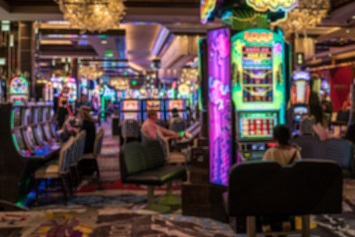When we think about hearing conservation programs, often the first places that come to mind are construction sites, loud manufacturing plants, or working around heavy machinery. But casinos are also loud, even more so if there’s a live band! Experts at Safety.BLR.com® recently gave some guidance to employers in recreation or entertainment industries where things tend to get noisy.
Complete Question: OSHA’s Noise standard (29 CFR 1910.95) requires employers to have a hearing conservation program in place if workers are exposed to a time-weighted average (TWA) noise level of 85 decibels (dBA) or higher over an 8-hour work shift. I work in a casino and we have music and announcements throughout the day (lets say 68-72 dBA). On weekends we have a live band that plays in front of bar for three hours. During the band, the sound level goes higher (85-95 dBA) at the bar level. Bartenders are provided hearing protection. How should I do the average to keep in compliance? Any other recommendations?
Answer: As you correctly stated, if any worker is exposed to a noise level of 85 dBA or higher over an 8-hour work shift, you will be required to provide hearing protection for all affected employees and develop and implement a hearing conservation plan.
Because you suspect that employees’ exposure may equal or exceed an 8-hour TWA of 85 dBA, you need to measure or monitor the actual noise levels in your workplace and estimate the noise exposure or “dose” received by employees during the workday. This will allow you to identify the employees to include in the hearing conservation program and to enable the proper selection of hearing protectors. Due the significant variations in the sound level at your casino, you will be required to use representative personal sampling to comply with these monitoring requirements unless you can show that area sampling produces the same results.
To conduct personal sampling, employees in roles exposed to high noise levels must wear a dosimeter during their shifts. A dosimeter is a device that measures the intensity of sound levels, stores the measurements, and integrates the measurements over time, providing an average noise exposure reading for a given period of time, such as an 8-hour workday. A microphone is attached to an employee’s clothing, usually near the shoulder, and the exposure measurement is simply read at the end of the shift. Since the dosimeter is worn by the employee, it measures noise levels in those locations in which the employee travels throughout the day. In your situation, it would be wise to conduct such monitoring on a weekend for employees exposed to the sound levels from the band in the bar area.
Area sampling would involve using a sound level meter to measure the intensity of sound at given moments at different times during the day. You would need to take a number of measurements at different locations within the casino, and because the noise levels fluctuate, the amount of time noise remains at each level would need to be determined. Using the appropriate sound level meter readings, you would then draw a map of the sound levels within different areas of the workplace. By using a sound level map and information on employee locations throughout the day, estimates of individual exposure levels can be developed.
If after conducting noise monitoring you determine that employees are exposed to average noise levels of 85 dBA or greater during an 8 hour workday, you must notify the affected employees; provide free annual hearing exams, hearing protection, and training; and conduct evaluations of the adequacy of the hearing protectors in use as part of a compliant hearing conservation program (unless changes made to tools, equipment, and schedules result in worker noise exposure levels that are less than the 85 dBA).
For more information about how to monitor noise levels at your workplace, see Appendix G to 29 CFR 1910.95.
Note: This question was answered by experts at Safety.BLR.com. If you would like to take a free trial of this safety resource, click here.

